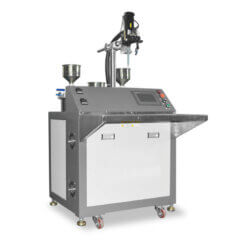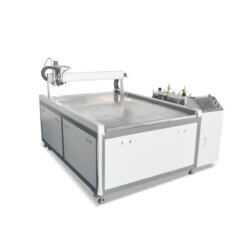Introduction to Glue Dispensing Machines and Mixing Methods
Glue dispensing machines are essential tools in various industries, including electronics, automotive, aerospace, and consumer goods manufacturing. They offer precise and efficient adhesive applications for bonding, sealing, and potting applications. When working with two-component adhesives, proper mixing is crucial for optimal performance. This article discusses the differences between static and dynamic mixing methods and introduces our state-of-the-art glue dispensing machine designed for high-viscosity adhesives.
Static Mixing: Simplicity and Cost-Effectiveness
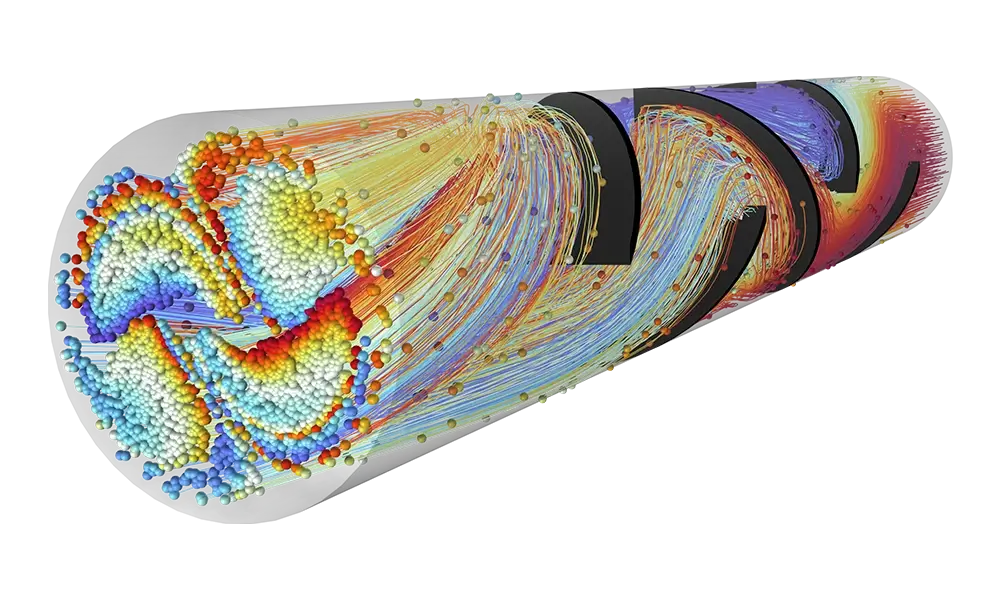
How Static Mixing Works
Static mixing relies on stationary mixing elements within a disposable mixing nozzle. As the adhesive components flow through the nozzle, they are divided, combined, and recombined, resulting in a homogeneous mixture upon exiting the nozzle.
Advantages of Static Mixing
- Simplicity: Static mixing requires no moving parts, making it easy to use and maintain.
- Low maintenance: The absence of moving parts reduces maintenance needs and downtime.
- Cost-effective: Static mixing is generally more affordable due to its straightforward design.
Disadvantages of Static Mixing
- Less efficient with high-viscosity materials: Static mixing may not be suitable for some high-viscosity adhesives, as the mixing process can be less effective.
- Disposable nozzles generate waste: Frequent nozzle replacements contribute to waste generation.
Suitable Applications for Static Mixing
Static mixing is ideal for bonding paper, photos, and lightweight materials in various industries, including crafts, packaging, and general assembly.
Dynamic Mixing: Enhanced Mixing Performance
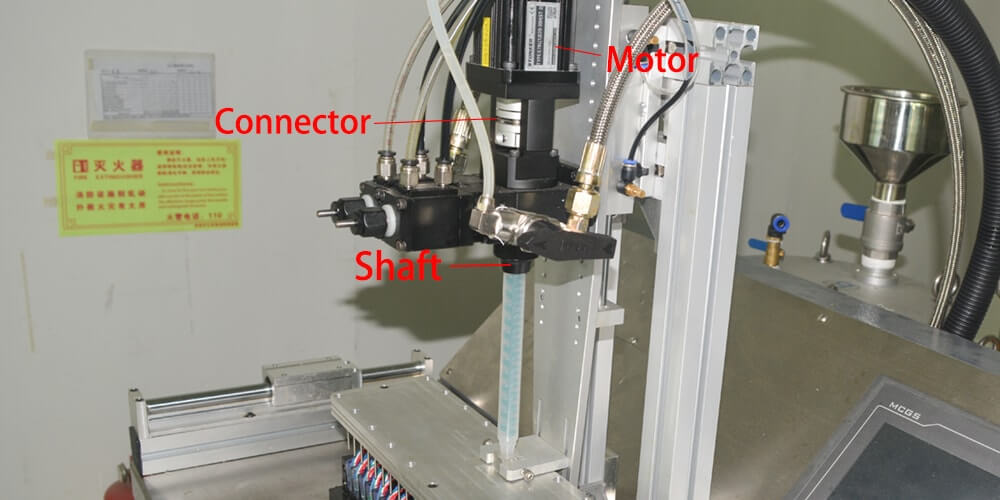
How Dynamic Mixing Works
Dynamic mixing utilizes a motor-driven mixing device, such as an impeller or rotating blades, within a mixing chamber. This dynamic action ensures thorough blending of adhesive components, even with high-viscosity materials.
Advantages of Dynamic Mixing
- Consistent and thorough mixing: Dynamic mixing ensures a more uniform and complete blend of adhesive components.
- Handles a wider range of material formulations: The dynamic mixing process accommodates various adhesive types and viscosities.
- Adjustable mixing speeds: Users can optimize the mixing process by adjusting the mixer’s speed.
Disadvantages of Dynamic Mixing
- Higher cost: Dynamic mixing systems typically have a higher initial cost due to the presence of motor-driven components.
- More maintenance required: Moving parts necessitates more frequent maintenance and cleaning.
- Cleaning challenges between batches: Thorough cleaning of the mixing chamber is required to avoid cross-contamination, which can be time-consuming.
Suitable Applications for Dynamic Mixing
Dynamic mixing is ideal for applications requiring precise and consistent adhesive mixing, such as electronics, automotive, and aerospace manufacturing.
Factors to Consider When Choosing a Mixing Method
- Adhesive type and viscosity: The type of adhesive and its viscosity play a crucial role in determining the most suitable mixing method. Static mixing is ideal for low to medium-viscosity adhesives, such as white glue (PVA glue) and some low-viscosity epoxies or polyurethanes. Dynamic mixing, on the other hand, is better suited for medium to high-viscosity adhesives, including high-viscosity epoxies, polyurethanes, silicones, and other specialty adhesives. Generally, dynamic mixing is preferred for adhesives with viscosities above 10,000 cps, while static mixing works well for adhesives below 10,000 cps. However, it is essential to consult the adhesive manufacturer’s recommendations for optimal results.
- Application requirements: Specific application needs, such as bonding strength, cure time, and durability, should be taken into account when selecting a mixing method. For instance, if your application requires a strong bond between materials with minimal cure time, a dynamic mixing system that thoroughly mixes the adhesive components and ensures proper curing may be ideal. Similarly, if your application demands a high level of durability or resistance to harsh environments, dynamic mixing may be the better choice due to its ability to create a consistent, high-quality adhesive mixture.
- Dispensing speed and volume: The speed and volume of adhesive dispensing can impact the choice of mixing method. Static mixing can be sufficient for applications requiring low to moderate dispensing speeds and smaller adhesive volumes. In contrast, dynamic mixing systems can handle higher dispensing speeds and larger adhesive volumes, making them more suitable for high-volume production environments or applications with rapid curing times.
- Budget constraints: The costs associated with static and dynamic mixing systems should be considered when making a decision. Static mixing is generally more affordable due to its simpler design and fewer moving parts. However, dynamic mixing systems may provide long-term cost savings through improved adhesive performance, reduced material waste, and increased productivity. It is essential to weigh the upfront costs against the potential long-term benefits to determine the most cost-effective solution for your needs.
- Maintenance considerations: Maintenance requirements and potential downtime associated with each mixing method should be factored into your decision. Static mixing systems have fewer moving parts and are therefore less prone to mechanical issues, making them relatively low-maintenance. Dynamic mixing systems, on the other hand, involve more complex components, which can lead to increased maintenance needs and downtime. Considering the impact of maintenance on your production process and overall efficiency will help you choose the most suitable mixing method for your application.
Introducing Our High-Performance Glue Dispensing Machine
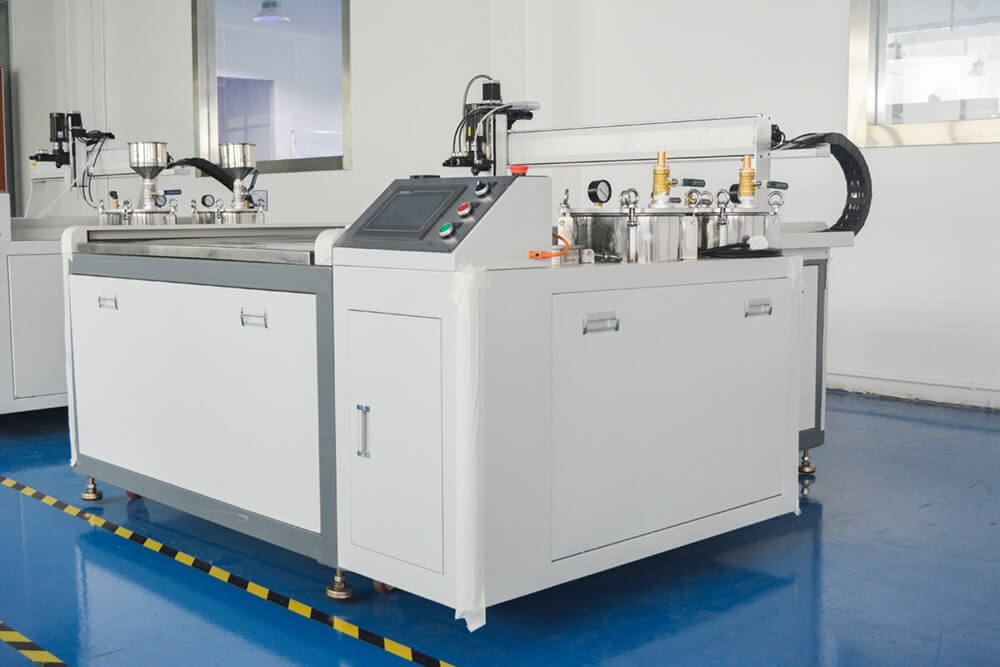
Key Features and Benefits
Our glue dispensing machine is designed with a two-part dynamic mixing function, making it suitable for adhesives with viscosities up to 25,000 cps. This advanced machine dispenses glue with 0.05g accuracy, ensuring precision and efficiency in every application.
Ideal Applications and Industries
Our glue dispensing machine excels in various industries and applications, including:
- LED potting: Our machine ensures precise and consistent adhesive application in the LED manufacturing process, improving product quality and durability.
- Electronic potting: With its high-precision dispensing, our machine is well-suited for protecting sensitive electronic components through potting applications.
- Other relevant industries: Our glue dispensing machine is also ideal for other industries requiring accurate and efficient adhesive application, such as automotive, aerospace, and consumer goods manufacturing.
Advantages of Our Glue Dispensing Machine
- Improved adhesive performance: The dynamic mixing function ensures thorough blending of adhesive components, resulting in optimal bonding strength and performance.
- Enhanced productivity and efficiency: Our machine’s precise dispensing capabilities minimize material waste and reduce production downtime.
- Cost savings: By minimizing waste and improving adhesive performance, our glue dispensing machine offers long-term cost savings for businesses.
Comparing Our Glue Dispensing Machine to Other Options
Our glue dispensing machine stands out from the competition due to its:
- Superior mixing capabilities: The dynamic mixing function ensures a consistent and thorough blend of adhesive components, even with high-viscosity materials.
- High-precision dispensing: The 0.05g accuracy allows for precise adhesive application, ensuring optimal performance in various applications and industries.
- Versatility: Our machine is compatible with a wide range of adhesive types and viscosities, making it suitable for numerous applications and industries.
Conclusion: Choosing the Right Mixing Method and Glue Dispensing Machine
Understanding the differences between static and dynamic mixing is crucial for selecting the appropriate mixing method for your specific application. While static mixing offers simplicity and cost-effectiveness, dynamic mixing provides enhanced mixing performance, particularly for high-viscosity adhesives.
Our state-of-the-art glue dispensing machine, designed with a two-part dynamic mixing function, delivers precise and efficient adhesive application, making it an ideal choice for industries such as LED potting, electronic potting, and more. By investing in our high-performance glue dispensing machine, you can optimize your adhesive application process and enjoy long-term cost savings and improved productivity.


